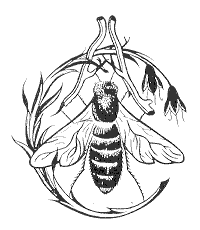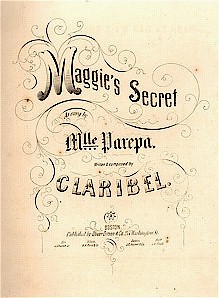Introduction

by Claribel

Born: December 23, 1830, London, England.
Died: January 30, 1869, Dover, England, of typhoid fever.
Buried: St. John-at-Hampstead churchyard, Hampstead, England.
Pseudonym: Claribel.




Born: December 23, 1830, London, England.
Died: January 30, 1869, Dover, England, of typhoid fever.
Buried: St. John-at-Hampstead churchyard, Hampstead, England.
Pseudonym: Claribel.


Charlotte was the daughter of solicitor Henry Alington Pye & Charlotte Yerburgh, and wife of Charles Cary-Barnard (married 1854).
She became one of the most successful and prolific ballad composers of the 19th Century. After attending a Vocal and Miscellaneous Entertainment
at the Mansion House in Louth in 1838, she declared she would become a poet and writer.
And, a little over a year later, when her father, the Warden of Louth, Lincolnshire, carried out the old custom of distributing cloth to poor women, Charlotte wrote a 20-verse poem to commemorate the occasion. By 1847, she was well enough known that when the new railway station was built at Louth, she was asked to lay the cornerstone.
After she and Charles married, and they lived at the Firs in Westgate, though Charles was parson of St. Olave’s in Ruckland.
Following Charlotte’s presentation at court in 1856, the couple moved to Pimlico in London. Among their neighbors was Michael Costa, conductor at Covent Garden, where Charlotte often attended.
Charlotte’s first published song was a musical setting of The Brook, by Tennyson. Her other popular secular works include The Blue Alsatian Mountains.